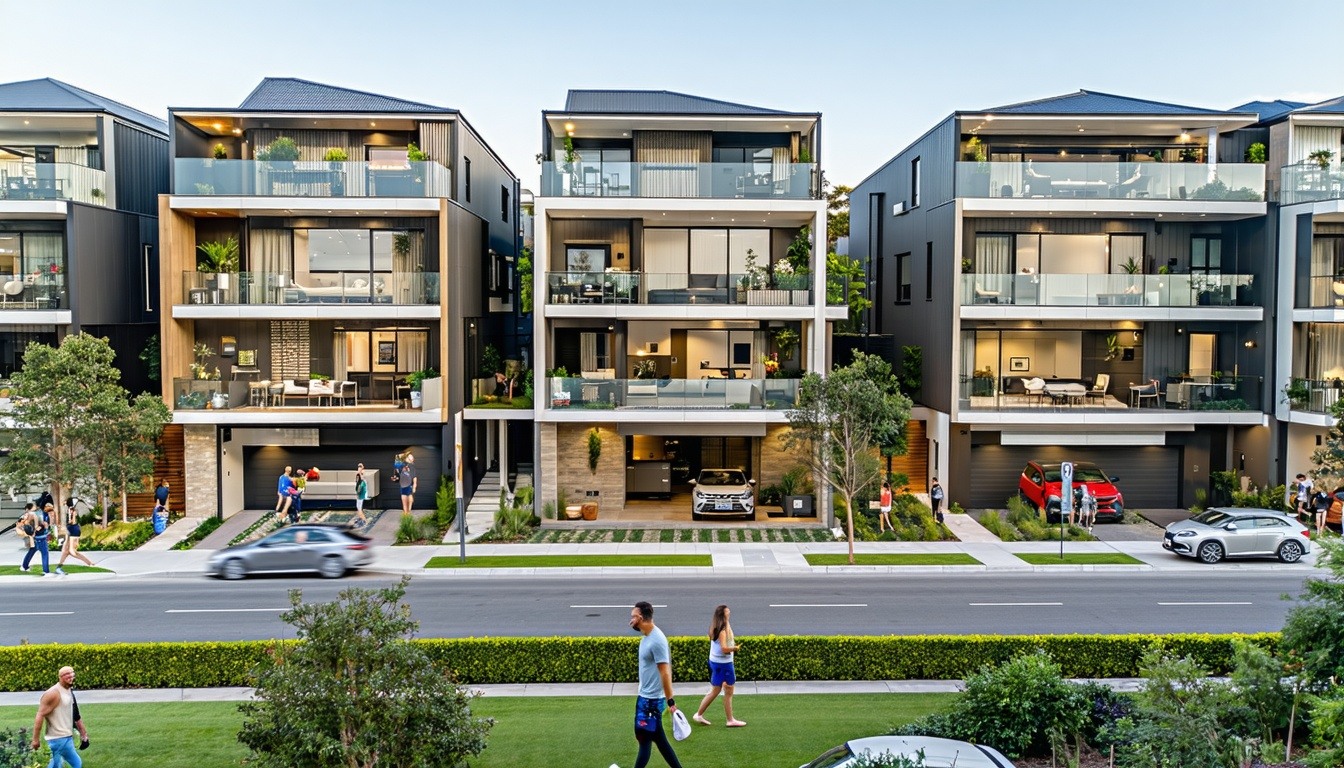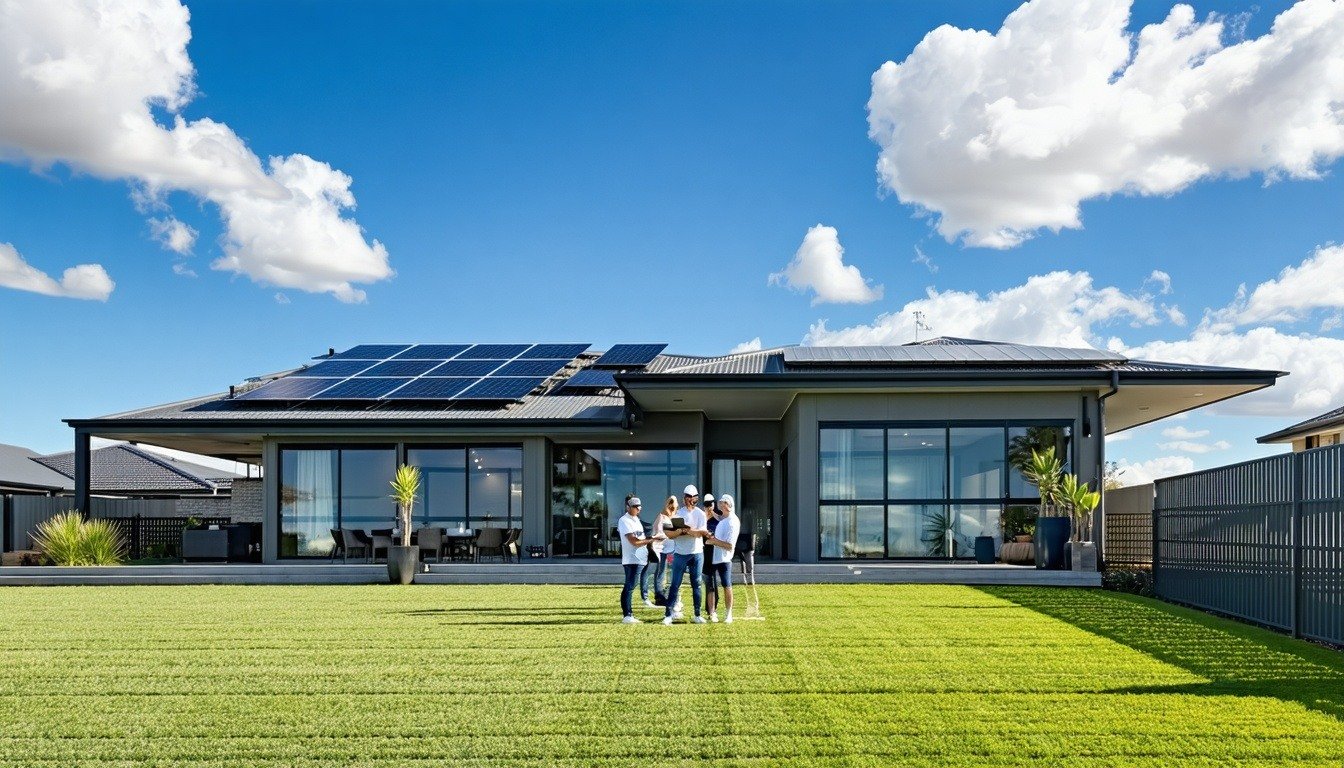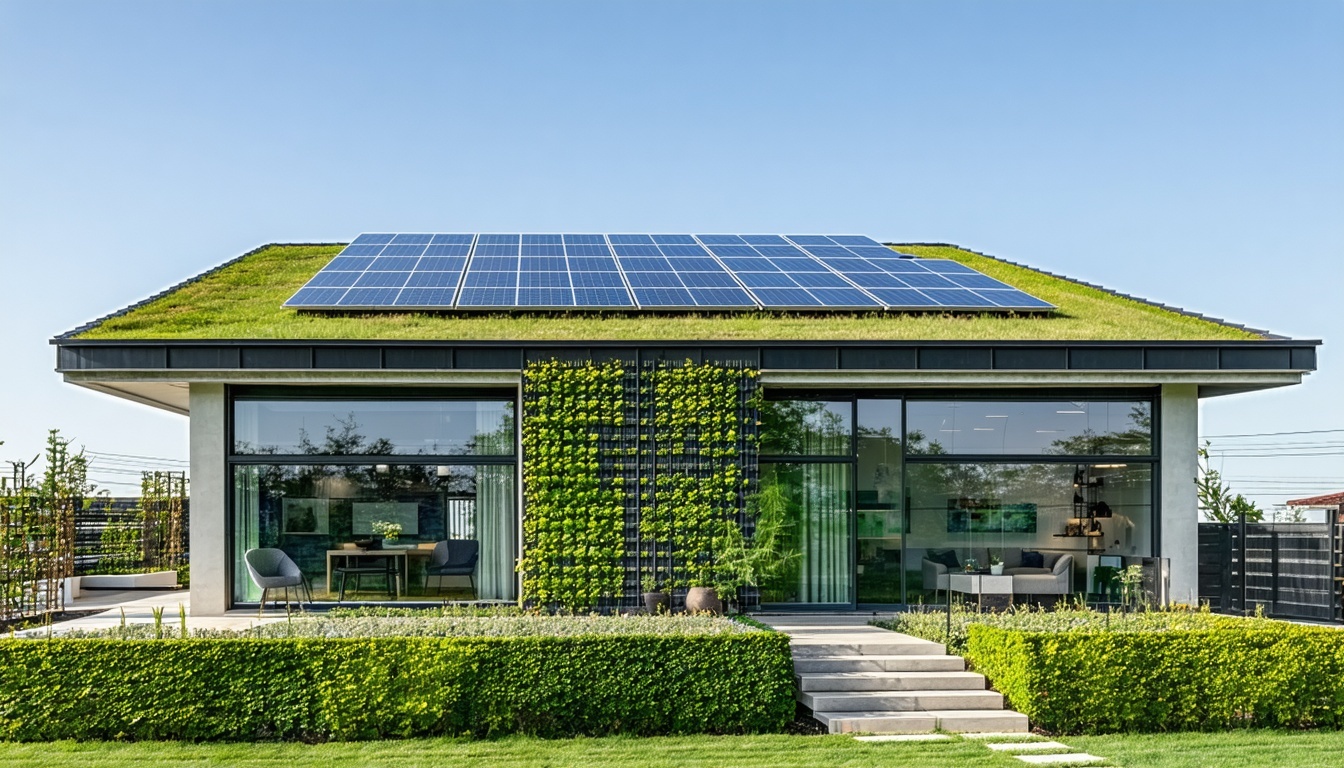In this article, we're going to discuss:
- What Has Changed in the Low and Mid-Rise Housing Policy?
- Which Areas and Developments are Affected?
- Policy Exemptions: What you Need to Know?
- How is the Energy Efficiency of a Building Calculated?
- How Certified Energy Can Help?
- Long-Term Impacts and Considerations
Introduction
The NSW Government has released the Low and Mid-Rise Housing Policy, with Stage 2 commencing on February 28, 2025. This policy introduces new non-discretionary development standards which aims to increase housing diversity and supply by allowing more dual occupancies, multi dwellings and multi units. The residential zones are located within 800 meters walking distance from 117 town centres, train metros, and light rail stations that are situated in the Greater Sydney, Central Coast, Lower Hunter, Newcastle, and Illawarra-Shoalhaven regions. This article explores the specifics of this policy, its implications, and its relation to ecologically sustainable development (ESD) and energy efficiency.
What has changed?
Key Updates on dual occupancy, multi-dwelling, and multi-unit developments
The Low and Mid-Rise Housing Policy aims to streamline the development process for suitable projects. It will override stricter maximum building height standards in Local Environmental Plans (LEPs) or Development Control Plans (DCPs), which often contain discretionary standards. These standards are flexible guidelines that councils can modify based on specific factors. Instead, this policy enforces non-discretionary standards which must be adhered to. For example, a maximum building height of 9.5m for residential flat buildings in R1 and R2 zones will be set for selected areas. If a development meets these standards, it cannot be refused based on building height.
The two stages of the Low and Mid-Rise Housing Policy are:
-
Stage 1 (commenced 1st July 2024): Permitted dual occupancies and semi-detached homes in the R2 low-density residential zone across all of NSW. This was an amendment to the Housing SEPP.
-
Stage 2 (commenced 28th February 2025): Allows dual occupancies, multi dwellings, multi units, terrace housing, and shop top housing in low and mid-rise housing areas.
Key changes to development standards include those related to floor space ratio, height of buildings, lot size, lot width, car parking, and subdivision changes in residential zones. For residential flat buildings and shop-top housing, different standards will apply based on whether the development is within 0-400 meters or 400-800 metres of a centre or station. Within 400m, these developments could achieve 21m heights and 3:1 FSR, while within 800m, the limit is 15m height and 2:1 FSR. Dual occupancies and medium density will have a maximum height of 9.5m and are limited to 2 storeys, with varying FSR and minimum site area requirements. This policy will influence a range of new multi units, multi dwellings, and dual occupancies.

Which areas and developments are affected?
The Low and Mid-Rise Housing Stage 2 policy only applies to NSW areas located within the four selected city regions.
It affects residential zoned land within 800 metres walking distance from 171 identified town centres and train/light rail stations in these regions. These changes will influence the development of dual occupancies, multi-dwelling and multi-unit housing including manor houses and terraces, residential flat buildings, and shop-top housing to fill the housing gap between detached homes and high-rise apartments. The policy's focus on increasing housing density means that many suburban areas are set to undergo significant transformation.
policy exemptions: what you need to know?
UNDERSTANDING THE EXEMPTIONS TO THE POLICY
However, certain areas are excluded from low and mid-rise housing areas:
-
Transport Oriented Development (TOD) areas mapped under Chapter 5 of the Housing SEPP
-
Land with a high-risk form natural hazards like bushfires and floods
-
Land located close to dangerous goods pipelines and high aircraft noise
-
Land that contains a heritage item
-
Sensitive coastal and rainforest lands
-
All land within the Bathurst, Blue Mountains, Hawkesbury, and Wollondilly Local Government areas due to bushfire and flood risks
How is the energy efficiency of a building calculated?
Understanding form factor and its calculation
The NSW Government Low and Mid-Rise Housing Policy is designed to develop increased multi units, multi dwellings, and dual occupancies, and provide more homes in close proximity to transport hubs and town centres. The form factor of a building is a measure of its compactness and is closely related to the Surface Area to Volume ratio (SA/V). It essentially quantifies the amount of external surface area a building has relative to its internal volume. A building with a lower form factor has less surface area for the same volume, indicating a more compact and a more energy-efficient shape because there is less area for heat transfer.
FORM FACTOR'S IMPACT ON ENERGY PERFORMANCE
This policy has notable implications for energy efficiency, a vital consideration for sustainable urban development. More compact building shapes exhibit a lower form factor, indicating less external surface area relative to the internal volume (Figure 1). Importantly, a lower form factor score directly correlates with greater energy efficiency because it minimises the area through which heat transfer occurs between the interior and exterior of the building. This reduction in heat loss during colder periods and heat gain during warmer periods leads to a decreased needs for energy-intensive heating and cooling systems.

Figure 1 Area / Volume Ratio Image from the Passive House Institute
ENERGY EFFICIENCY ACROSS DIFFERENT HOUSING TYPES
The different housing types encouraged by this policy possess inherent variation in their form factor. For example, dual occupancies typically have a form factor score of around 0.8, which reflects their relatively higher amount of exposed external surface area. Terrace housing and multi dwellings, which share walls with adjacent properties, achieve a more energy-efficient form factor of approximately 0.6 due to their reduced exposure to the external environment. Even greater energy efficiency sharing of walls, roofs, and floors.
By promoting these more compact forms of housing, particularly in well-serviced locations, the Low and Mid-Rise Housing Policy indirectly fosters the development of a more energy-efficient built environment. This contributes to lower overall energy demands and supports the creation of more sustainable and environmentally conscious communities. This is a pivotal step towards a greener future for NSW.
HOW CAN WE ASSIST AT CERTIFIED ENERGY?
Mark, our Low and Mid-Rise Housing Specialist, plays a pivotal role in implementing the NSW Low and Mid-Rise Housing Policy. Holding a Certificate IV in NatHERS, Mark brings a unique blend of technical expertise and strategic vision to dual occupancy, multi dwelling and multi unit housing. He navigates the complexities of building design to support the creation of more sustainable and diverse housing options, bridging the gap between freestanding homes and high-rise buildings.
Long-Term Impacts and Considerations
ENERGY EFFICIENCY AND POWER GENERATION
The Low and Mid-Rise Housing Policy could significantly impact energy demand by promoting compact housing forms near transport hubs and town centres. Dual occupancy, multi dwellings and multi unit housing often have better thermal performance due to their lower surface-area-to-volume ratio, potentially decreasing the need for heating and cooling. This improved energy efficiency, when scaled across numerous developments, might results in reduced strain on the power grid during peak demand periods. While the direct impact on nuclear power plant requirements is speculative, the cumulative effect of energy-efficiency housing could influence long-term energy infrastructure planning, potentially deferring new power plant construction.
ADDRESSING HOUSING CHALLENGES
The Low and Mid-Rise Housing Policy aims to address the housing crisis by creating tens of thousands of new homes. By increasing housing supply and providing more divers options, the policy seeks to improve affordability and cater to various life stages. While it may not completely solve housing issues, the policy represents a substantial step towards alleviating the housing crisis. Its focus on mixed-use communities near transport and amenities aligns with substantial urban development principles, potentially creating vibrant and inclusive neighbourhoods. However, the policy’s success will depend on broader economic and social factors.
CARBON REDUCTION IN TRANSPORTATION
The policy’s emphasis on development near town centres and public transport nodes is designed to reduce car dependency and associated carbon emissions. By making essential services and transport more accessible, residents are encouraged to use public transport, walk, or cycle for daily needs. This strategic approach aligns with global test practices in sustainable-related carbon emissions. While quantitative data on potential carbon reductions is not available, the policy’s focus on well-located housing directly supports the creation of more sustainable less car-dependent communities. This will significantly contribute to lowering the carbon footprint across the selected NSW regions.
FUTURE URBAN MOBILITY AND AUTONOMOUS VEHICLES
The Low and Mid-Rise Housing Policy does not explicitly address autonomous vehicles, but its focus on creating denser, well-connected communities could support the future adoption of shared, driverless transportation systems. Hypothetically, these areas could become ideal testbeds for on-demand autonomous vehicles ownership. Higher population density and mixed-use developments could make such services more economically viable and convenient, aligning with the policy’s broader goals of creating well-connected and accessible communities. This scenario represents a future development beyond the current scope of the policy’s implementation details. The potential integration of autonomous vehicles could further enhance the sustainability and liveability of these communities.
References:
Lindsay Taylor Lawyers. (2024). Alert: Second stage of Low and Mid-Rise Housing Policy – Low and Mid-Rise Housing Areas.
NSW Planning. (2024). Low and Mid-Rise Housing Policy.
https://www.planning.nsw.gov.au/policy-and-legislation/housing/low-and-mid-rise-housing-policy
Modelur. (2024). Use form factor to reduce energy consumption of buildings.
https://modelur.com/use-form-factor-to-reduce-energy-consumption-of-buildings/







